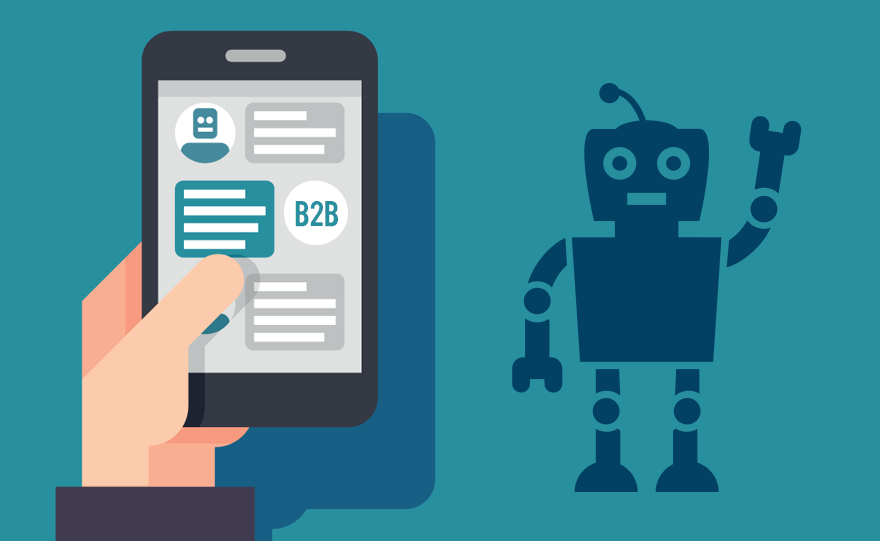Why Chatbots should be a part of your Big Data plan in 2024
In the past, if people wanted something done, they had to do it on their own. This is why acquiring new knowledge is a necessity. These days, however, almost everything can be done with a click of a button – all thanks to big data.
One example of this shift in human behavior is eCommerce. This is why chatbots for ecommerce are gaining a lot of steam. There is an estimate of 1.9 Billion people who would prefer to shop online for their needs. This is because it enables them to save time and money. Most importantly, it allows them to avoid physical contact especially during times like these.
Even though data has improved our lives significantly, it is still in its infancy stage. And this year, the biggest development of big data has to do with chatbots integration. If you are someone who uses data in day-to-day operations, we will be discussing how chatbots can lead to the evolution of big data. But before that, let us first define what a chatbot is.
What is a Chatbot?
In the most basic terms, a chatbot is a technology programmed to act as a temporary chat agent. Developers will code in specific questions and answers that chatbots can provide to customers.
Most of the time, these questions are based on what people frequently ask. That way, human customer agents only have to cater to inquiries that are of a more complex nature. Meanwhile, the simple and generic questions will be answered by chatbots.
Even though chatbots are perceived to have limited capacity, they have an enormous potential to acquire and collect new information. Hence, it continuously grows its capacity to provide valuable customer service to inquirers.
Now that you’ve understood what a chatbot is, below are some points that show how chatbots are the next phase of the big data evolution.
Chatbots Help Collect Data
The keyword here is automation. Many businesses and organizations have been practicing automation since early 2020. This way, they can focus on optimizing their business funnels instead of doing menial tasks.
Traditionally, people would rely on email and call support as a way to obtain information from customers. But here’s the challenge: (1) manual data collection is time-consuming (2) there usually aren’t enough people to do data collection.
Data collection is only a single part of the business. Since it takes a lot of time to accomplish, there is the possibility of neglecting other business operations. Most of the time, we have a lot of customer queries than a certain staff can handle. Hence, a lot of potential data for collection have to be put on the wayside.
One easy way to resolve these challenges would be through the use of chatbots. Chatbots are easy to set up. Once you do, customers will get automated answers to the most frequently asked questions.
You can customize the ai chatbot in a way that a customer is directed to a customer service agent if he has a question that the chatbot cannot answer. This way, you can filter out basic inquiries from the ones that require one-on-one attention from your staff.
Chatbots Help You Examine Data
Chatbots can make use of predictive analysis to offer personalized responses to customers. On top of that, it can also group inquirers into certain categories.
For instance, people can be grouped according to buying history. You can utilize this data to further enhance your understanding of what a customer needs. Using this grouping information and your customer profile, you will know what products to market to which types of people.
Chatbots can also help you with prospecting. You can customize the chatbots to invite customers to read a blog or watch a video before proceeding to the next step of the conversation. The chatbot can then track which customers proceeded.
Watching the video is a sign of interest in what is being offered. Hence, you can filter people who are most likely to buy from the ones that only have a slight interest in your offerings.
Improved Product Recommendations
Chabot interactions with customers will give you data on what people prefer in terms of product interest.
For instance, you may have been used to sending automated Android product offerings to one of your customers. But after a few conversations, he has had with your chatbot, you realize that your customer is an Apple user. Having learned this information, you can now switch your strategy to only sending him automated offerings related to Apple products.
With improved product recommendations, you are also able to enhance your conversion rate.
Chatbots can Improve With the Data it Collects
Initially, chatbots have limited capacity. For one thing, it can only answer questions assigned to them by their owner. But as the chatbot gathers more information from customers, they can become more intelligent and provide more valuable and relatable answers to customers.
All one has to do is to take the data gathered and let a programmer incorporate the new information into the chatbot. When this happens, the chatbot not only absorbs new data related to its customer inquiry tasks but also assigns feelings to the user’s words. Hence, feelings analysis and data collection are enhanced.
Detecting New Trends
Chatbots have the capacity to analyze demographics as well as process natural language. With every customer that the chatbot interacts with, certain trends can be detected to help you think of new products/services to launch to your target market.
Aside from that, you can also use chatbots to detect the problems the majority of customers experience with a specific product. That way, you will be able to craft measures and solutions.
Final Takeaway
What we found most astounding about chatbots is that it has made way for people to collect and analyze data through automation. The only thing one has to do is to establish the key performance indicators and then the chatbots will take care of the rest.
It can be an extension of your customer service team. At the same time, you can use it to identify potential loopholes in your product blueprint, helping you brainstorm a resolve for these issues.




























